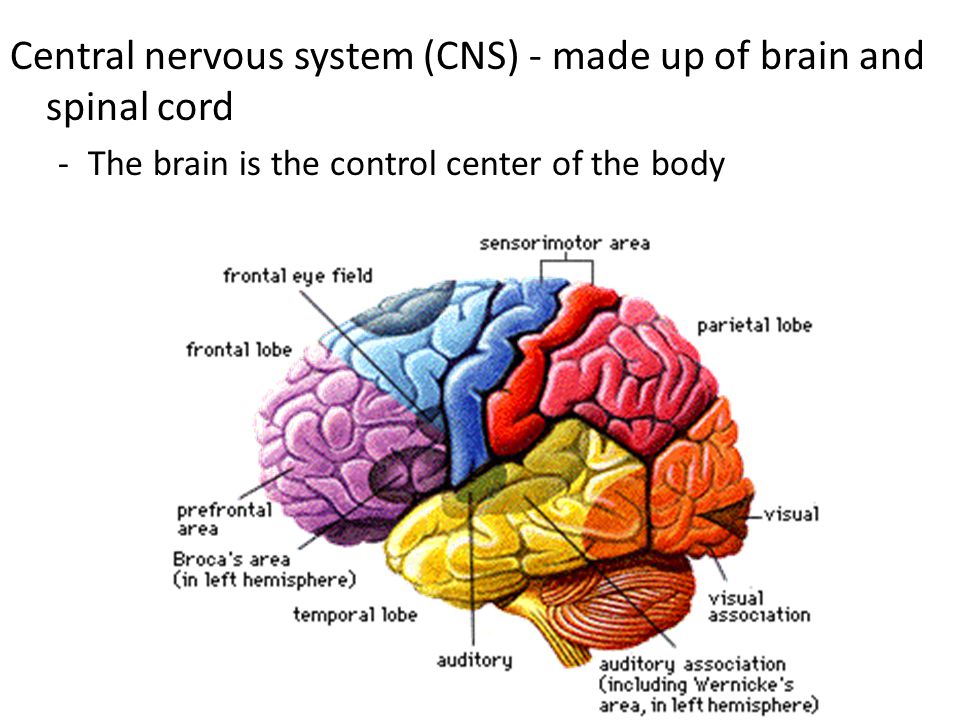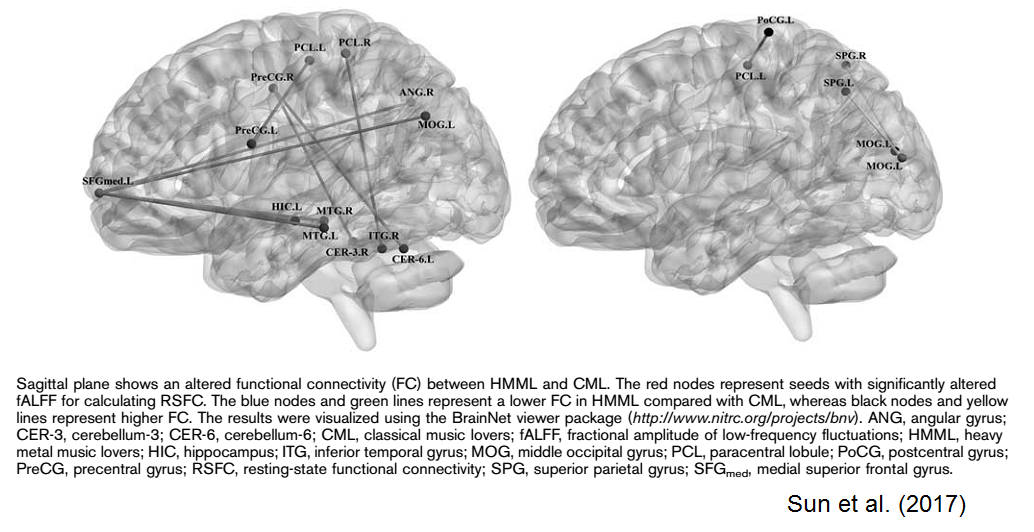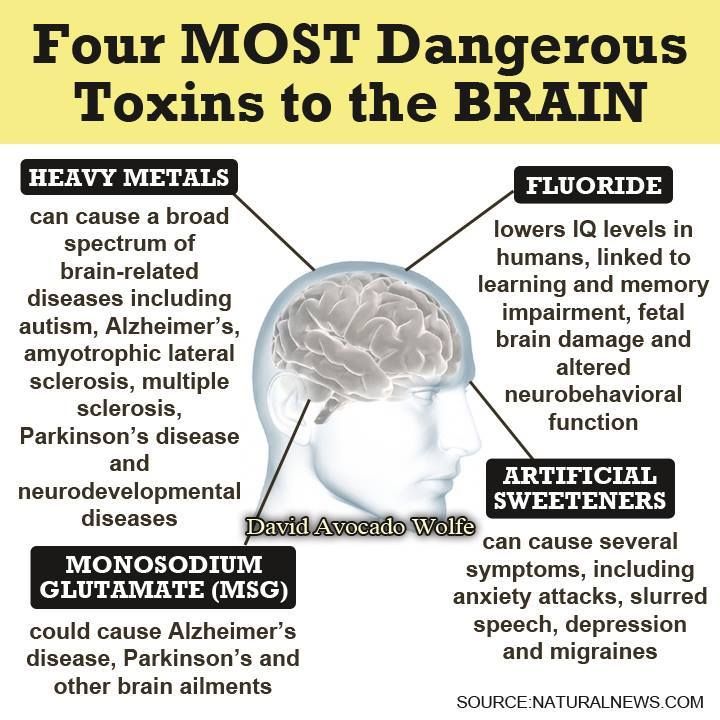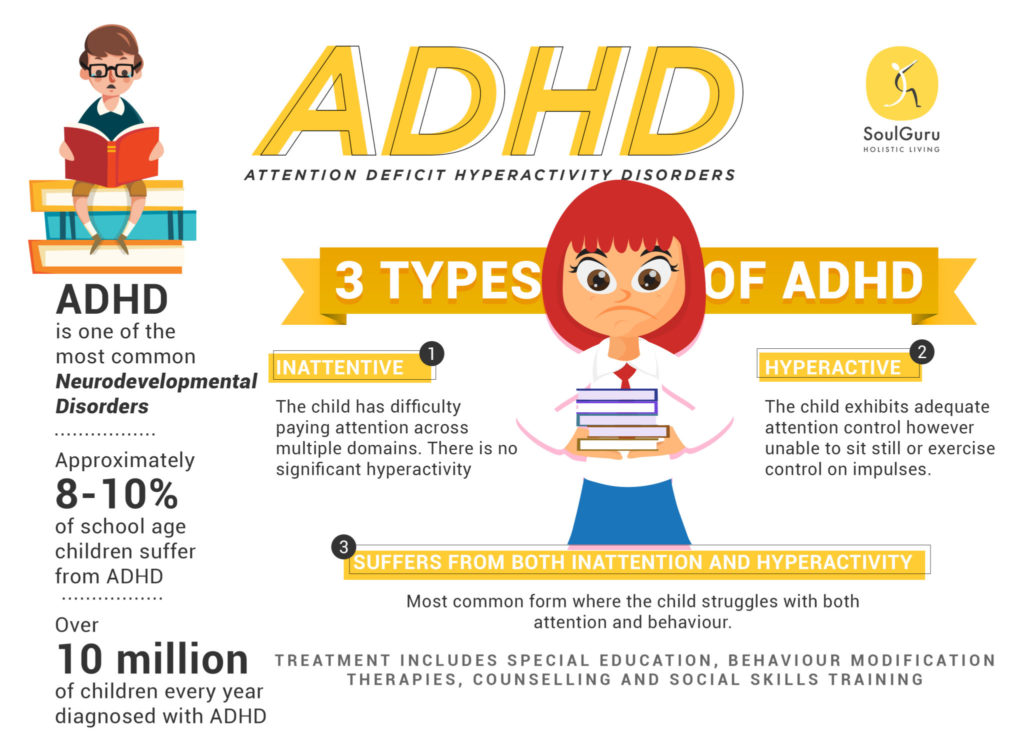Heavy metal in the brain
Heavy Metal Exposure and the Developing Brain
Heavy metals such as arsenic, cadmium, lead, and mercury can wreak havoc on the developing brain of children if they are present in their blood in high concentrations. This is because they are neurotoxic. Unsettlingly, most baby food on the market contains at least one dangerous heavy metal.
While there are many sources of heavy metals in the environment, children are preponderantly exposed to these neurotoxins from the very food they eat during their first three years of life. A congressional report from 2021 found multiple popular baby food manufacturers to allow a tremendous content of heavy metals in their products, among which there are Beech-Nut, Hain Celestial Food, and Gerber.
By ingesting mostly toxic baby food during their infanthood and toddlerhood, children are bound to end up with high concentrations of arsenic, cadmium, lead, and mercury in their blood. Eventually,
the presence of dangerous levels of heavy metals in their bodies may lead to autism spectrum disorders such as childhood disintegrative disorder, Asperger's syndrome, pervasive developmental disorder, and Kanner's syndrome.
Call 205.328.9200 Claim Application
How a high concentration of heavy metals in the blood can affect brain development
The heavy metals lurking in baby food are neurotoxins, substances that are destructive to nervous tissue. Since nervous tissue is found in the brain, heavy metals will directly target it when they exist in dangerous concentrations in the blood. During their circulation in the body, arsenic, cadmium, lead, and mercury pass through the nerve capillaries and subsequently settle down in the brain (source: Pakistan Journal of Pharmaceutical Sciences). They can also cross the blood-brain barrier, whose purpose is to regulate the entry of circulating substances, and retain themselves in it. The presence of heavy metals in the brain will disrupt its normal development, which significantly increases children's risk of coming to struggle with autism spectrum disorders.
Excessive heavy metal accumulation in the brain can be very toxic, inducing oxidative stress, disrupting mitochondrial function, and impairing the activity of various enzymes. The damage caused by these neurotoxins to the brain may result in irreversible health problems, including severe neurological disorders. Even essential heavy metals such as zinc, iron, manganese, and copper may become neurotoxic if they exist in too high a concentration in the body. In addition to autism spectrum disorders, the presence of high levels of arsenic, cadmium, lead, and mercury in the brain can also trigger neurodegenerative disorders such as:
The damage caused by these neurotoxins to the brain may result in irreversible health problems, including severe neurological disorders. Even essential heavy metals such as zinc, iron, manganese, and copper may become neurotoxic if they exist in too high a concentration in the body. In addition to autism spectrum disorders, the presence of high levels of arsenic, cadmium, lead, and mercury in the brain can also trigger neurodegenerative disorders such as:
- Huntington's disease
- multiple sclerosis
- Alzheimer's disease
- amyotrophic lateral sclerosis
- Parkinson's disease
- Gulf War syndrome
Early-life arsenic exposure can cause lower brain weight and a reduction in neurons, which only worsens brain degeneration.
Furthermore, arsenic exposure was found to induce mitochondrial oxidative stress and neuronal cell death. These destructive effects of arsenic exposure also negatively impact normal brain development in children (source: F1000Research).
When it comes to cadmium, frequent exposure to this heavy metal can severely interfere with the normal function of the nervous system, and infants and toddlers are more susceptible than adults to experience this. Moreover, at the cellular level, cadmium can also induce oxidative stress, as well as suppress gene expression and inhibit DNA damage repair.
Lead exposure can result in oxidative stress, too, if it exists in high concentrations in the blood and brain of children. The hippocampus is the main region of lead accumulation, although this heavy metal can also accumulate in several other brain regions. In children, lead exposure can result in decreased intellectual ability. It can also cause deficits in the following, all of which are hallmarks of autism spectrum disorders (source: BioMed Research International)
- memory
- executive functioning
- attention
- language
- motor skills
- emotion
- processing speed
- visuospatial skills
Finally, when there is excessive mercury in a child's body, the greatest amounts are usually found in the occipital lobe, cerebellum, and basal ganglia, which are brain areas responsible for vision and movement. At the cellular level, mercury is known to impact a variety of neuronal activities, such as dopamine metabolism, neural stem cell differentiation, increased calcium influx, DNA damage, and mitochondrial dysfunction. It is worthy of note that fish and seafood consumption is one of the primary forms of mercury exposure for humans.
At the cellular level, mercury is known to impact a variety of neuronal activities, such as dopamine metabolism, neural stem cell differentiation, increased calcium influx, DNA damage, and mitochondrial dysfunction. It is worthy of note that fish and seafood consumption is one of the primary forms of mercury exposure for humans.
Call 205.328.9200 Claim Application
Our law firm provides quality legal assistance to parents whose children developed autism after being fed toxic baby food
For over two decades, our attorneys and legal team have been striving to offer superior legal assistance to victims of toxic exposure and their family members. If you fed your child mostly toxic baby food and they developed a form of autism, you are most likely eligible to file a claim with the responsible manufacturers
, so we encourage you to get in touch with us. You will need to provide our attorneys with evidence of having given your child toxic baby food for a prolonged time and proof of their diagnosis.
After we receive all the required information and documents from you, you can go on with your life as usual and focus on caring for your child, as we are aware that children on the spectrum often need special attention. We will file a claim with the liable baby food companies, which is bound to result in the maximum financial compensation you are entitled to. Lastly, it is important to know that we work on a contingency fee basis, which means that you will not have to pay us anything unless we obtain money for you and your child.
Call 205.328.9200 Claim Application
Heavy Metals in the Brain can Severely Impact Brain and Body Health
By Susan Luck, RN, BS, MA, HN-BC, CCN, HWNC-BC
As American life expectancy continues to increase, the pressing concern has shifted from living longer to living healthier. However, try as we might, we cannot escape the many environmental chemical exposures we come into contact with daily.
Many of the diseases we have been taught to think of as part of “normal” aging may, in fact, be manifestations of our body’s accumulation of heavy metals and other toxins.
Science based research along with innovative testing, can offer clues to many of the cognitive issues that we are seeing, across the life span.
The term heavy metal refers to any metallic chemical element that has a relatively high density (molecular weight) and is toxic or poisonous at low concentrations. Heavy metals are natural components of the Earth’s crust. They cannot be degraded or destroyed. These metals can enter our bodies via food, drinking water, and air. As trace elements, some heavy metals (e.g. copper, selenium, zinc) are essential to maintain crucial processes in our function and metabolism. However, at higher concentrations they can lead to toxicity.
Heavy metals include mercury (Hg), cadmium (Cd), arsenic (As), chromium (Cr), thallium (Tl), and lead (Pb). Heavy metals tend to bioaccumulate. This means that even small concentrations of the chemical in a person can have a deleterious impact over time. Compounds accumulate in living things any time they are taken up and stored faster than they are broken down (metabolized) or excreted.
Studies show that heavy metals in the body may be implicated in everything from Alzheimer’s and cognitive decline, behavioral problems, kidney dysfunction, Parkinson¹s, epilepsy, and cardiovascular disease, Exposures to heavy metals including mercury, lead, aluminum, and cadmium, have been found in the cord blood of babies whose mothers were smokers.
At Rezilir, testing for heavy metals and many other environmental toxins is part of our assessment along with genetic markers to understand one’s unique ability to detoxify and clear the body of these substances along with and to implement protocols to lessen one’s toxic burden.
Overview of Heavy Metals
Lead
Lead exposure from the environment can occur through drinking water, food, air, soil, and from old paint dust and chips containing lead. Lead in paint was banned in 1978. In 1986, lead piping was banned from use in new U.S. plumbing systems, but lead remains throughout much of the country’s drinking water infrastructure, which largely pre-dates the ban. Until 2014, plumbing fixtures with as much as 8% lead-by-weight could be legally labelled “lead free. The EPA estimates that 10 to 20 percent of human exposure to lead may come from lead in drinking water as demonstrated in water testing throughout the United States https://www.ewg.org/tapwater/reviewed-lead.php). Besides neurotoxic effects, lead can cause problems in the synthesis of hemoglobin, stress the kidneys, gastrointestinal tract, joints, reproductive system, and acute or chronic damage to the cardiovascular and nervous system. A 2018 study published in The Lancet Public Health suggests that of the 2.3 million deaths every year in the US, about 400,000 are attributable to lead exposure, of which 250,000 are from cardiovascular disease.
Until 2014, plumbing fixtures with as much as 8% lead-by-weight could be legally labelled “lead free. The EPA estimates that 10 to 20 percent of human exposure to lead may come from lead in drinking water as demonstrated in water testing throughout the United States https://www.ewg.org/tapwater/reviewed-lead.php). Besides neurotoxic effects, lead can cause problems in the synthesis of hemoglobin, stress the kidneys, gastrointestinal tract, joints, reproductive system, and acute or chronic damage to the cardiovascular and nervous system. A 2018 study published in The Lancet Public Health suggests that of the 2.3 million deaths every year in the US, about 400,000 are attributable to lead exposure, of which 250,000 are from cardiovascular disease.
There is persuasive evidence that lead can have small, subtle, subclinical effects, particularly on neuropsychological developments in children. With the elimination of lead-based house paint, and the increased use of lead-free gasoline, lead poisoning is certainly less prevalent. However, low-level toxicity is still an issue. The EPA warns that if lead is not detected early, children with high levels of lead in their bodies can suffer from damage to the brain and nervous system, behavior and learning problems (such as hyperactivity), slowed growth, headaches, and more. Adults can experience high blood pressure, muscle and joint pain, digestive problems, nerve disorders, and memory and concentration problems.
However, low-level toxicity is still an issue. The EPA warns that if lead is not detected early, children with high levels of lead in their bodies can suffer from damage to the brain and nervous system, behavior and learning problems (such as hyperactivity), slowed growth, headaches, and more. Adults can experience high blood pressure, muscle and joint pain, digestive problems, nerve disorders, and memory and concentration problems.
Lead is still used widely in the manufacturing, construction, and chemical industries. Coal burning power plants still spew lead into the atmosphere. The major industries where lead is still used includes: batteries, alloys, pigments and compounds, cable sheathing, and ammunition. Lead pipes used to supply water have largely been replaced but still exists in some places.
It is important to check your local municipal water supply and your home for old layers of lead paint in your interior and exterior walls.
Aluminum
It has been researched for decades that once aluminum enters the body, it bio accumulates in brain tissue and contributes to cognitive impairment and memory loss. Significant amounts of aluminum can be found in food emulsifiers, antiperspirant deodorants, hair sprays, baking powder, many types of toothpaste, in our drinking water, and in much of our cookware, exposing us to high amounts over the course of one’s lifetime. There has been much speculation, therefore, that aluminum may be one of the prime factors contributing to the onset of Alzheimer’s disease. The connection between aluminum and Alzheimer’s disease became more evident, when in 1995, the Journal, Neurotoxicology(31 Dec 1994, 16(3):413-424), reported that the widespread use of aluminum salts to purify water could account for the large numbers of people suffering from Alzheimer’s.
Significant amounts of aluminum can be found in food emulsifiers, antiperspirant deodorants, hair sprays, baking powder, many types of toothpaste, in our drinking water, and in much of our cookware, exposing us to high amounts over the course of one’s lifetime. There has been much speculation, therefore, that aluminum may be one of the prime factors contributing to the onset of Alzheimer’s disease. The connection between aluminum and Alzheimer’s disease became more evident, when in 1995, the Journal, Neurotoxicology(31 Dec 1994, 16(3):413-424), reported that the widespread use of aluminum salts to purify water could account for the large numbers of people suffering from Alzheimer’s.
Recently, the final piece of the puzzle may have fallen into place: the connection between aluminum and fluoride. New research has revealed that fluoride in drinking water makes the aluminum that we ingest more bio-available. As was reported in Brain Research (Vol.7 84:98), the combination of aluminum and fluoride causes the same pathological changes in brain tissue found in Alzheimer’s patients.
Note: There is a significant difference between metallic aluminum and plant-derived aluminum, which is in the form of aluminum hydroxide. No studies have ever shown a connection between aluminum hydroxide and toxic levels of aluminum in the human body — which is a good thing, because there is a lot of it in our food supply.
Mercury
Mercury is another heavy metal that has toxic effects and bioaccumulates. Mercury is naturally occurring and is found in soil, rocks, wood, and fuels like coal and oil. Simple soil erosion deposits mercury in rivers and lakes, but concentrations generally remain low, unless erosion reaches extraordinary levels. Common exposures include: eating fish or shellfish contaminated with methylmercury, breathing vapors in air from spills, incinerators and industries that burn mercury-containing fuels, release of mercury from dental work and medical treatments, breathing contaminated workplace air or skin contact during use in the workplace (dental, health services, chemical, and other industries that use mercury). Human-generated sources such as coal plants emit approximately half of atmospheric mercury, with natural sources such as volcanoes responsible for the remainder. An estimated two-thirds of human-generated mercury comes from stationary combustion, mostly of coal. Other important sources include gold production, non-ferrous metal production, cement production, waste disposal, crematoria, caustic soda production, pig iron and steel production, mercury production (mostly for batteries), and biomass burning. Mercury and its compounds are commonly used in chemical laboratories, hospitals, dental clinics, and facilities involved in the production of items such as fluorescent light bulbs, batteries, and explosives.
But the major source of mercury is found in our food chain and is responsible for about 1/3 of the levels found in our bodies. Mercury that naturally occurs in coal production is released during burning and enters the air; it is then precipitated into the oceans, lakes, and rivers by rain. According to the EPA, coal-fired power plants in the United States emit about 48 tons of mercury into the air every year — and more than half of this mercury falls within 5 miles of the plant itself. When it reaches the water, microorganisms consume it and convert it into a substance called methyl mercury. Methylmercury works its way up the food chain, reaching high concentrations among populations of some species.
According to the EPA, coal-fired power plants in the United States emit about 48 tons of mercury into the air every year — and more than half of this mercury falls within 5 miles of the plant itself. When it reaches the water, microorganisms consume it and convert it into a substance called methyl mercury. Methylmercury works its way up the food chain, reaching high concentrations among populations of some species.
Larger species of fish, such as tuna or swordfish, are usually of greater concern than smaller species. The U.S. Food and Drug Administration (FDA) and the U.S. Environmental Protection Agency (EPA) advise women of child-bearing age, nursing mothers, and young children to completely avoid swordfish, shark, king mackerel and tilefish (golden bass), to limit consumption of albacore (“white”) tuna to no more than 6 oz (170 g) per week, and of all other fish and shellfish to no more than 12 oz (340 g) per week. A 2006 review of the risks and benefits of fish consumption found that for adults the benefits of one to two servings of fish per week outweigh the risks, even (except for a few fish species) for women of childbearing age, and that avoidance of fish consumption could result in significant excess coronary heart disease deaths and suboptimal neural development in children. The consumption of fish is by far the most significant source of ingestion-related mercury exposure in humans, although plants and livestock also contain mercury due to bioaccumulation of mercury from soil, water and atmosphere.
The consumption of fish is by far the most significant source of ingestion-related mercury exposure in humans, although plants and livestock also contain mercury due to bioaccumulation of mercury from soil, water and atmosphere.
The nervous system is very sensitive to all forms of mercury. Methyl mercury and metallic mercury vapors are more harmful than other forms, because more mercury in these forms reaches the brain. Exposure to high levels of metallic, inorganic, or organic mercury can damage the brain, kidneys, and developing fetus. Effects on brain functioning may result in irritability, tremors, changes in vision or hearing, and memory problems. The term, “Mad Hatter,” refers to 19th Century workers who used mercury to make hats and went bald and suffered from severe muscular tremors, dementia, and fits of wild, uncontrollable laughter.
Short-term exposure to high levels of metallic mercury vapors may cause health problems including lung damage, nausea, vomiting, diarrhea, increases in blood pressure or heart rate, skin rashes, and eye irritation. Mercury toxicity has been associated with hypertension, decline in cognitive function and Alzheimer¹s Disease, coronary heart disease, heart attack, stroke, generalized atherosclerosis, and kidney disease.
Mercury toxicity has been associated with hypertension, decline in cognitive function and Alzheimer¹s Disease, coronary heart disease, heart attack, stroke, generalized atherosclerosis, and kidney disease.
Young children are more sensitive to mercury than adults. Mercury in the mother’s body passes to the fetus and may accumulate there. It can pass to a nursing infant through breast milk. Women are advised to avoid dental work prior to and during pregnancy and breast feeding. Mercury’s harmful effects that may be passed from the mother to the fetus include brain damage, mental retardation, lack of coordination, blindness, seizures, and inability to speak. Children poisoned by mercury may develop problems of their nervous and digestive systems, and kidney damage. Mercury has an affinity for fetal tissue and accounts for it’s implication in birth defects. In 2002, the National Academy of Sciences found strong evidence for the toxicity of methyl mercury to children’s developing brains, even at low levels of exposure. A recent study from the Centers for Disease Control found that as many as 637,233 American children are born each year with mercury levels of more than 5.8 micrograms per liter, the level associated with brain damage and loss of IQ
A recent study from the Centers for Disease Control found that as many as 637,233 American children are born each year with mercury levels of more than 5.8 micrograms per liter, the level associated with brain damage and loss of IQ
Cadmium
Cadmium derives its toxic effects from its chemical similarity to zinc, an essential micronutrient for plants, animals, and humans. Cadmium has become a more prevalent cause for concern in recent years. Like lead, it is an underground mineral that did not enter our air, food, and water in significant amounts until it was mined as part of zinc deposits. Now there is widespread environmental contamination with cadmium. Cadmium may actually displace zinc in some of its important enzymatic and organ functions and can interfere with these functions. The zinc-cadmium ratio is very important, as cadmium toxicity and storage are greatly increased with zinc deficiency, and good levels of zinc protect against tissue damage by cadmium. The refinement of grains reduces the zinc-cadmium ratio, so zinc deficiency and cadmium toxicity are more likely when the diet is high in refined grains and flours.
The refinement of grains reduces the zinc-cadmium ratio, so zinc deficiency and cadmium toxicity are more likely when the diet is high in refined grains and flours.
Cadmium is bio-persistent. Once it is absorbed, it stays in the body for years (even decades), although it is eventually excreted. We get most of our exposure from our food via the soil it¹s grown in. Luckily, cadmium is not well absorbed by digestion.Cigarette smoke plus industrial burning of metals puts some cadmium into the air. Cadmium levels in the atmosphere are much higher in industrial cities and it is more harmful when inhaled. Soil levels of cadmium are increased by cadmium in water, by sewage contamination, by cadmium in the air, and by high-phosphate fertilizers.
Coffee and tea may contain significant cadmium levels. Root vegetables such as potatoes may pick up more cadmium in the soil, and grains can concentrate cadmium. Seafood, particularly crustaceans, including crab and lobster, and mollusks, such as clams and oysters, have higher cadmium levels, although many are also higher in zinc, balancing the cadmium. During the growth of grains such as wheat and rice, cadmium (from the soil) is concentrated in the core of the kernel, while zinc is found mostly in the germ and bran coverings. With refinement, zinc is lost, increasing the cadmium ratio. Refined flours, rice, and sugar all have relatively higher ratios of cadmium to zinc than do the whole foods.
During the growth of grains such as wheat and rice, cadmium (from the soil) is concentrated in the core of the kernel, while zinc is found mostly in the germ and bran coverings. With refinement, zinc is lost, increasing the cadmium ratio. Refined flours, rice, and sugar all have relatively higher ratios of cadmium to zinc than do the whole foods.
One pack of cigarettes contains about 20 mcg. of cadmium, or about 1 mcg. per cigarette. About 30 percent of that goes into the lungs and is absorbed, and the remaining 70 percent goes into the atmosphere to be inhaled by others or to contaminate the environment. With long-term smoking, the risk of cadmium toxicity is increased. Though most of it is eliminated, a little bit is stored every day. Marijuana may also concentrate cadmium, so regular smoking of cannabis may also be a risk factor for toxicity from this metal. Metal workers, zinc miners, and anyone who works with zinc galvanization may accumulate more cadmium. Those who drink soft water; those who smoke or inhale second hand smoke, coffee and tea drinkers, and those who eat refined flours, sugars, and white rice are also likely to receive greater exposure to cadmium. Occupational exposure to cadmium has been implicated in a significant increase of lung and prostate cancer. Cadmium toxicity has been implicated in generating prostate enlargement, possibly by interfering with zinc. Cadmium may also produce bone defects (osteomalacia, osteoporosis) in humans and animals. In addition, the metal can be linked to increased blood pressure and effects the myocardium in animals. Cadmium may also cause anemia, yellow teeth discoloration and loss of smell (anosmia).
Occupational exposure to cadmium has been implicated in a significant increase of lung and prostate cancer. Cadmium toxicity has been implicated in generating prostate enlargement, possibly by interfering with zinc. Cadmium may also produce bone defects (osteomalacia, osteoporosis) in humans and animals. In addition, the metal can be linked to increased blood pressure and effects the myocardium in animals. Cadmium may also cause anemia, yellow teeth discoloration and loss of smell (anosmia).
Testing
At Rezilir, we work with specialty Labs to test for heavy metals as part of our comprehensive assessment, followed by an individualized treatment protocol.
Prevention
Avoid exposures in the workplace, home, food chain
- Say no to new amalgam fillings and, if possible, have a dentist who understands the process to replace your existing mercury fillings.
- Avoid aluminum cookware and aluminum-based deodorants.
- Limit eating high-mercury fish including swordfish, shark, orange roughy, and albacore tuna.

- Test your water at its source entering your home for all heavy metals.
Filter fluoride and lead out of your drinking water and avoid in toothpaste. - Evaluate products around the home for toxic metals (e.g., fertilizers, fungicides, insect or rodent poisons, lead-based paint, refinishing chemicals, household cleaning agents, hobby supplies, photographic chemicals, batteries, etc.) Keep these products in their original containers.
- Read labels every time you buy a product and choose safer products when at all possible.
- Keep all potentially toxic products well away from children.
- Dispose of light bulbs, batteries, and other items safely.
- Calculate your mercury intake here: http://www.nrdc.org/health/effects/mercury/index.asp
Schedule an Environmental Education and Coaching session with our Environmental expert, Susan Luck, RN.
References:
Environmental risk factors for dementia: a systematic review.
Killin LO, Starr JM, Shiue IJ, Russ TC.BMC Geriatr. 2016 Oct 12;16(1):175. doi: 10.1186/s12877-016-0342-y.PMID: 27729011
Parkinson’s Disease and the Environment.
Ball N, Teo WP, Chandra S, Chapman J.Front Neurol. 2019 Mar 19;10:218. doi: 10.3389/fneur.2019.00218. eCollection 2019.PMID: 30941085
Neurotoxicity of Metal Mixtures.
Andrade VM, Aschner M, Marreilha Dos Santos AP.Adv Neurobiol. 2017;18:227-265. doi: 10.1007/978-3-319-60189-2_12.PMID: 2888927
The neurological toxicity of heavy metals: A fish perspective.
Green AJ, Planchart A.Comp Biochem Physiol C Toxicol Pharmacol. 2018 Jun;208:12-19. doi: 10.1016/j.cbpc.2017.11.008. Epub 2017 Dec 1.PMID: 291991
Childhood Lead Exposure and Adult Neurodegenerative Disease.
Reuben A.J Alzheimers Dis. 2018;64(1):17-42. doi: 10.3233/JAD-180267.
Lead (Pb) neurotoxicology and cognition.
Santa Maria MP, Hill BD, Kline J.Appl Neuropsychol Child. 2019 Jul-Sep;8(3):272-293. doi: 10.1080/21622965.2018.1428803. Epub 2018 Mar 1.
Blood lead levels and cognitive functioning: A meta-analysis.
Vlasak T, Jordakieva G, Gnambs T, Augner C, Crevenna R, Winker R, Barth A.Sci Total Environ. 2019 Jun 10;668:678-684. doi: 10.1016/j.scitotenv.2019.03.052. Epub 2019 Mar 5.
Intermittent low-level lead exposure provokes anxiety, hypertension, autonomic dysfunction and neuroinflammation.
Shvachiy L, Geraldes V, Amaro-Leal Â, Rocha I.Neurotoxicology. 2018 Dec;69:307-319. doi: 10.1016/j.neuro.2018.08.001. Epub 2018 Aug 8.
Aluminum in Neurological and Neurodegenerative Disease.
McLachlan DRC, Bergeron C, Alexandrov PN, Walsh WJ, Pogue AI, Percy ME, Kruck TPA, Fang Z, Sharfman NM, Jaber V, Zhao Y, Li W, Lukiw WJ.Mol Neurobiol. 2019 Feb;56(2):1531-1538. doi: 10.1007/s12035-018-1441-x. Epub 2019 Jan 31.
doi: 10.1007/s12035-018-1441-x. Epub 2019 Jan 31.
Understanding Aspects of Aluminum Exposure in Alzheimer’s Disease Development.
Kandimalla R, Vallamkondu J, Corgiat EB, Gill KD.Brain Pathol. 2016 Mar;26(2):139-54. doi: 10.1111/bpa.12333. Epub 2015 Dec 8.
Aluminum in neurological disease – a 36 year multicenter study.
Lukiw WJ, Kruck TPA, Percy ME, Pogue AI, Alexandrov PN, Walsh WJ, Sharfman NM, Jaber VR, Zhao Y, Li W, Bergeron C, Culicchia F, Fang Z, McLachlan DRC.J Alzheimers Dis Parkinsonism. 2019;8(6):457. doi: 10.4172/2161-0460.1000457. Epub 2018 Nov 29.
Aluminum in Neurological and Neurodegenerative Disease.
McLachlan DRC, Bergeron C, Alexandrov PN, Walsh WJ, Pogue AI, Percy ME, Kruck TPA, Fang Z, Sharfman NM, Jaber V, Zhao Y, Li W, Lukiw WJ.Mol Neurobiol. 2019 Feb;56(2):1531-1538. doi: 10.1007/s12035-018-1441-x. Epub 2019 Jan 31.
A Hypothesis and Evidence That Mercury May be an Etiological Factor in Alzheimer’s Disease.
Siblerud R, Mutter J, Moore E, Naumann J, Walach H.Int J Environ Res Public Health. 2019 Dec 17;16(24):5152. doi: 10.3390/ijerph26245152.
Insights into the Potential Role of Mercury in Alzheimer’s Disease.
Bjørklund G, Tinkov AA, Dadar M, Rahman MM, Chirumbolo S, Skalny AV, Skalnaya MG, Haley BE, Ajsuvakova OP, Aaseth J.J Mol Neurosci. 2019 Apr;67(4):511-533. doi: 10.1007/s12031-019-01274-3. Epub 2019 Mar 15.
Dose-dependent relationships between chronic arsenic exposure and cognitive impairment and serum brain-derived neurotrophic factor.
Karim Y, Siddique AE, Hossen F, Rahman M, Mondal V, Banna HU, Hasibuzzaman MM, Hosen Z, Islam MS, Sarker MK, Nikkon F, Saud ZA, Xin L, Himeno S, Hossain K.Environ Int. 2019 Oct;131:105029. doi: 10.1016/j.envint.2019.105029. Epub 2019 Jul 25.
Heavy metals and their effect on the body
Now everyone knows about large-scale environmental pollution with harmful and toxic substances. After all, it's no secret that the atmosphere of industrial cities is polluted with emissions of heavy metals. They are present in the air we breathe, in the water we drink, in the soil, where they are accumulated by the roots of plants and enter the cycle of substances in nature. That is why toxic substances can be found in everything that surrounds us: in food, cosmetics, interior items, etc.
After all, it's no secret that the atmosphere of industrial cities is polluted with emissions of heavy metals. They are present in the air we breathe, in the water we drink, in the soil, where they are accumulated by the roots of plants and enter the cycle of substances in nature. That is why toxic substances can be found in everything that surrounds us: in food, cosmetics, interior items, etc.
Are all metals dangerous?
Metals such as iron, copper, zinc, molybdenum play a physiological role in small amounts: they participate in biological processes and are necessary for the proper functioning of plants, animals and humans. They participate in the process of photosynthesis and the assimilation of nitrogen by plants, promotes the synthesis of sugar, proteins, starch, and vitamins.
What is toxicity?
Heavy metals and their compounds have a toxic effect on the human body, causing a number of diseases. Some metals can accumulate for a long time in certain organs and tissues.
Cadmium
Excessive intake of cadmium in the body can lead to anemia, liver damage, impaired lung function, osteoporosis, skeletal deformities, and the development of hypertension. It accumulates in the kidneys, can cause the formation of stones in them.
Lead
Lead, along with arsenic, cadmium, mercury, belongs to the class of highly hazardous substances. Lead accumulates in bones, causing their gradual destruction, accumulates in the liver and kidneys, and can cause decreased performance, memory impairment, and even chronic brain diseases.
Mercury
Mercury has a toxic effect on the central nervous system, causes tachycardia and leads to emotional instability, memory impairment, insomnia, apathy, etc. A person constantly feels tired, quickly gets tired, becomes distracted and irritable. He is constantly haunted by headaches.
What to do?
Since the development of industry does not stand still, the amount of pollution emissions into the environment is growing, the impact of ecology on human health today is 25–50% of the totality of all influencing factors. Therefore, we can say with confidence that residents of megacities are more susceptible to the negative effects of the environment. That is why all our programs include extended check-up diagnostics, within which you can determine the degree of heavy metals in the body (14 metals and 20 minerals). Based on the diagnostic results, it is possible to determine:
Therefore, we can say with confidence that residents of megacities are more susceptible to the negative effects of the environment. That is why all our programs include extended check-up diagnostics, within which you can determine the degree of heavy metals in the body (14 metals and 20 minerals). Based on the diagnostic results, it is possible to determine:
- general degree of intoxication of the body with heavy metals, the ability to eliminate them from the body;
- the quantitative ratio of the mineral balance (20 minerals), the presence of a deficiency or excess of certain minerals;
- the degree of oxidative aggression and acidity of the body, its anti-oxidative status.
- the degree of predisposition to diabetes, allergies, assess the regenerative potential.
Pay special attention to nutrition and natural detoxification of the body. One of the most effective ways is to take "Donat Mg" healing water as part of our programs.














